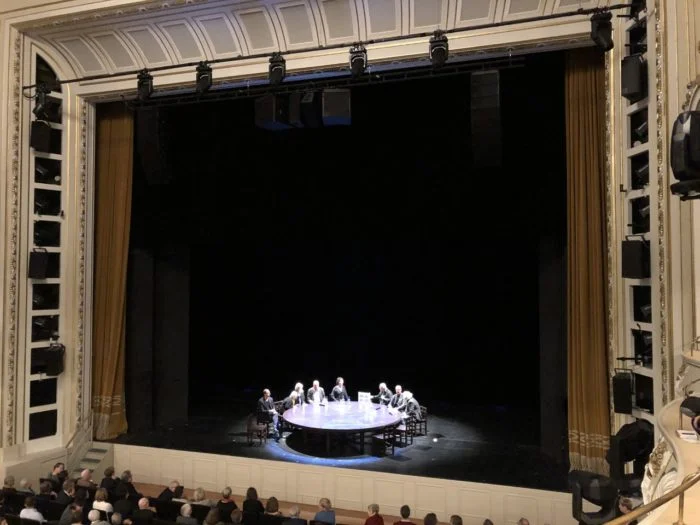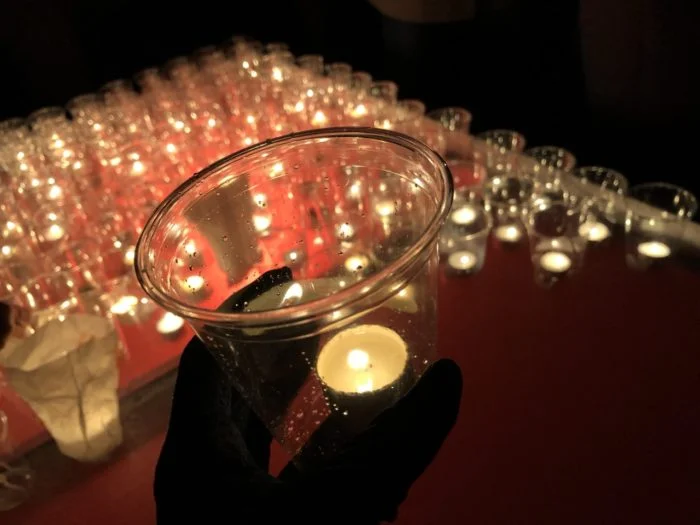How to celebrate the 30th anniversary of the ‘Peaceful Revolution’ in Saxony?
Personal perspectives between the capital, the ‘City of Heroes’, and the forgotten periphery
by Sabine Volk

All over the former German Democratic Republic (GDR), the autumn days of the year 1989 were marked by popular protests on the streets, the mass exit of citizens via Czechoslovakia, Poland, and Hungary, and the rising feeling that the rigid socialist system of the GDR would not last as it was. The wind of change blew especially strong in the southeast of the GDR, in the former proud independent state of Saxony. Indeed, it was in the Saxon city of Leipzig where the regular Monday demonstrations (Montagsdemonstrationen) took of, and where the famous revolutionary chant ‘We are the people!’ (Wir sind das Volk!)was born. Both would later become the main symbols of the so-called ‘Peaceful Revolution’ which brought the GDR’s state socialist system to collapse and ultimately resulted in the reunification of the former two German states.
In 2019, a festive mood can be found everywhere in the territory of the former GDR, and particularly strong in the now federal state of Saxony. The state, and particularly its proud metropolises Dresden and Leipzig, identify as the starting point and main drivers of the ‘Peaceful Revolution’. All over Saxony, the local administrations set up anniversary events to remind of the memorable autumn days of 1989. But how to commemorate the ‘Peaceful Revolution’ adequately? How to value the complex interconnections between its different actors, drivers, followers? The two Saxon metropolises opted for very different ways to commemorate ‘1989’, telling different stories about the democratic revolutions – and giving away typical local sensitivities and identities.
High Culture in Dresden
In Dresden, Saxony’s historic capital located in the picturesque valley of the Elbe-river, the anniversary celebrations of the ‘Peaceful Revolution’ took place in the city’s historically reconstructed neo-classicist theater halls and the famous opera house Semperoper. The events started on 3 October, the national holiday celebrating German Unity, with the opening of two exhibitions. These focused on two plays which had been performed in Dresden in 1989: Beethoven’s famous liberation opera Fidelio in the Semperoper, and GDR-author Christoph Hein’s adaption of the tale of King Arthur and the “Knights of the Roundtable”. Both plays had contained clearly regime-critical content, but managed to surpass the strict GDR-censorship. After the performances, the actors had gathered on the stage once more in order to read out a self-authored manifesto on the necessary changes in the GDR’s political system, risking state prosecution, torture, and even imprisonment. Somewhat miraculously, none of the artists had suffered repression in the aftermath of their political activism on stage.
The two-day ‘Symposium Art and Revolution’ in Dresden on the weekend of the 5 and 6 October 2019 sought to commemorate these two plays, and particularly the artists who had been personally involved. Therefore, the organizers at the Semperoper and state theater invited members of the 1989-crew, other representatives of Dresden’s past and contemporary cultural scene, as well as a few historians. High-level speeches, lectures and panel discussions addressed the meaning and potential of the performative arts for political change, particularly the possibilities of critical art to achieve subversive power. Next to the day-time symposium, Dresden’s theater halls hosted special anniversary plays such as a new interpretation of Beethoven’s Fidelio, a screening of the original performance of the “Knights of the Roundtable” and other thematic plays.
The ‘Festival of Lights’ in Leipzig
The celebrations of the 30th anniversary of the ‘Peaceful Revolution’ in Leipzig could hardly have been more different. In stark contrast to Dresden’s elitist, somewhat private celebrations, Leipzig’s municipal authorities organized a large popular festival entitled ‘Festival of Lights’. The events were set for the 9 October, the historic date of the largest Montagsdemonstration in the autumn of 1989, when 70,000 people had gathered in the streets of Leipzig to protest against the oppression and lack of freedom under the GDR-regime. This year’s ‘Festival of Lights’ took place in the open urban space, mainly on the central Augustusplatz as well as the Ring, a circular street surrounding the city center. Also, the Nikolaikirche invited for a special service, tying in with its tradition of weekly peace prayers out of which the Monday demonstrations had grown, and which has not been interrupted since 1982.
The ‘Festival of Lights’ was partly a re-enactment of the 9 October 1989: it gathered thousands of people inside and in front of the Nikolaikirche as well as on the Augustusplatz in the afternoon and early evening. People carried candles shining bright in the autumnal darkness and reminding of the peace movement’s main symbolism. Both the church and the municipal organizers had invited a broad array of people to speak to the crowd. GDR civil rights activists as well as local, regional and national leading politicians reminded of the importance of the 1989 protests for achieving freedom and democracy in Germany and Europe. Representatives of contemporary social movements such as activists from ‘Fridays for Future’ and the search and rescue-missions emphasized that freedom and democracy are still values to fight for. Finally, foreign guests such as the mayor of the northern Polish city Gdańsk highlighted the close entanglement of the ‘Peaceful Revolution’ in the GDR with the opposition movements in other Central and Eastern European countries, notably the Polish trade union Solidarność. After the speeches, the crowd symbolically re-enacted the 9 October, theatrically forming the letters “Leipzig 89” out of candlelight. Subsequently, the crowd quietly walked on the Ring-street, where light and sound installations reminded of the most iconic sites of the large-scale demonstration 30 years earlier.

Local identity work through commemoration
Having participated in both anniversary celebrations, it is obvious that the two cities have very different takes on the ‘Peaceful Revolution’ and its aftermath. Whereas Dresden emphasizes the impact of high culture on the revolutionary events, Leipzig honors the ordinary citizens who were courageous enough to demonstrate on the streets. While the access to the events in Dresden is rather difficult, requiring previous knowledge about the two cultural productions and the money to spend on opera and theater tickets, the Leipzig events provide free and uncomplicated access to everybody interested, citizens and visitors alike. The timing of the celebrations is also quite telling: Dresden celebrates on the Day of German Unity and the following weekend, reading the ‘Peaceful Revolution’ in direct connection with the German Reunification. Leipzig, in turn, commemorates the exact historic date of the 9 October demonstration, valuing the ‘Peaceful Revolution’ as an independent memorable event. As a foreign visitor, I feel much more included in the popular events in Leipzig, where I actively participate in the crowded church service, the putting down of candles, and the march around the city. In Dresden, on the other hand, I am more reluctant to participate, mostly because the other – few – participants are at least 30-40 years older than me, of another gender, and convey the feeling of a self-centered, elitist complicity which stands above popular concerns.
The manner in which the two cities celebrated the 30th anniversary of the ‘Peaceful Revolution’ can be understood as local identity work, as it impressively echoes the cities’ characters. Even though their geography suggests so much closeness, their respective urban identities seem to be miles apart. Dresden conveys its much-discussed habitus as a European center of high culture, tradition, and heritage. Its elite commemorates ‘1989’ mostly for itself, neglecting the historic involvement of its citizens in the revolutionary autumn. Leipzig, on the other hand, as a historic trade city and regional economic hub, is much more down to earth. It successfully cultivates its status as a ‘city of heroes’, a nickname suggested by author Christoph Hein, arguing that the mass protest was at the core of the ‘Peaceful Revolution’. One could argue that both cities had their share in bringing down the socialist dictatorship, but cross references to the merits of the other? Wrong! Rather, both cities mostly celebrate themselves.
Responding to the New Right
This self-congratulatory naval-gazing is upsetting in the current tense political climate in Germany, and the city of Dresden in particular. Indeed, the New Right’s election returns and mobilization have not only increased over the past five years. Also, some of these eastern German far-right populist movements and parties actively claim the revolutionary heritage for their political activity. In particular, the Dresden-based anti-immigrant and anti-elitist movement PEGIDA (short for ‘Patriotic Europeans against the Islamization of the Occident’) and the new-ish party Alternative for Germany (AfD) abuse the historical memory of the ‘Peaceful Revolution’ on a regular basis. They re-enact the Monday demonstrations and use their slogans and symbols in order to criticize the current German government, striking a controversial parallel between the current state of the German liberal democratic system and the GDR. Hence, these two New Right actors offer dangerous illiberal re-interpretations of concepts such as ‘democracy’ and ‘freedom’.
Against the backdrop of far-right populist abuses of the memory of the ‘Peaceful Revolution’, Leipzig’s re-enactment of the Monday demonstration of 9 October 1989 could be a strong symbol. The event publicly reclaims the Monday as demonstration day and core revolutionary chants such as ‘We are the people’. However, I wonder to what extent the anniversary events reach the segments of society who are convinced that the current state of democracy in Germany is as bad or even worse than in GDR-times? Voices who might contest the liberal consensus about the meaning of the ‘Peaceful Revolution’ are not present, neither at Dresden’s ‘Symposium Art and Revolution’ nor Leipzig’s ‘Festival of Lights’.
The true heirs of the ‘Peaceful Revolution’?
While both Dresden and Leipzig celebrate their own merits, and the New Right claims to continue the ‘Peaceful Revolution’, a small city in the Saxon periphery often gets forgotten: Plauen. 15,000 people had demonstrated in Plauen two days before the historic Monday demonstration in Leipzig on 9 October. These 15,000 protestors constituted about a quarter of the whole population of the city, a much higher share than in any other place in the GDR. On top of that, the demonstration took place on the day of the GDR’s 40th anniversary which its socialist authorities celebrated with great military pomp. What a provocation!
The small city of Plauen celebrated the 30th anniversary of its influential demonstration in a rather quiet celebration far from the media spotlight. Some former civil rights activist and former Federal President Joachim Gauck visited the small city in the Saxon periphery, asserting once more: it was here that the ‘Peaceful Revolution’ started its unstoppable flow all over the GDR. Starting from Plauen, it overthrew an unlawful regime in only a few weeks.